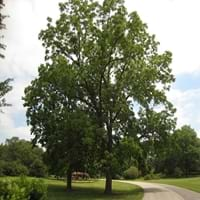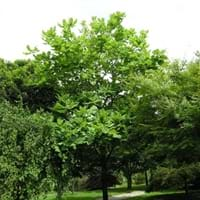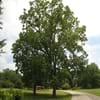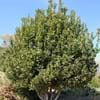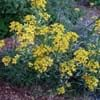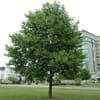Life Span
Perennial
Perennial
Origin
United States, Northeastern United States, Mid-Atlantic United States, Southeastern United States, North-Central United States, Central United States, South-Central United States, Texas, Canada
North America, United States, Mid-Atlantic United States, Southeastern United States, Central United States, South-Central United States
Types
Not Available
Not Avaialble
Habitat
bottomlands, Moist woods
Woodland Garden Secondary
USDA Hardiness Zone
4-9
5-8
Sunset Zone
1a, 1b, 2a, 2b, 3a, 3b, 4, 5, 6, 7, 8, 9, 14, 15, 16, 17, 18, 19, 20, 21
4, 5, 6, 7, 8, 9, 14, 15, 16, 17, 18, 19, 20, 21
Habit
Oval or Rounded
Oval or Rounded
Flower Color
Yellow green
White
Flower Color Modifier
Bicolor
Bicolor
Fruit Color
Green, Chocolate
Rose
Leaf Color in Spring
Green
Green, Light Green, Silver
Leaf Color in Summer
Green, Dark Green
Dark Green, Silver
Leaf Color in Fall
Yellow, Dark Green, Yellow green, Gold
Yellow, Yellow green, Brown, Silver
Leaf Color in Winter
Not Available
Not Available
Leaf Shape
Pinnate
Oblong
Plant Season
Spring, Summer, Fall
Spring, Summer, Fall, Winter
Sunlight
Full Sun
Full Sun
Type of Soil
Clay, Loam, Sand
Clay, Loam
The pH of Soil
Acidic, Neutral
Acidic, Neutral
Soil Drainage
Well drained
Average
Bloom Time
Late Spring, Early Summer
Early Summer
Tolerances
Not Available
Not Available
Where to Plant?
Ground
Ground
How to Plant?
Seedlings
Seedlings
Plant Maintenance
Medium
Medium
Watering Requirements
Average Water Needs, Requires regular watering
Needs watering once a week
In Summer
Lots of watering
Lots of watering
In Spring
Moderate
Moderate
In Winter
Average Water
Average Water
Soil pH
Acidic, Neutral
Acidic, Neutral
Soil Type
Clay, Loam, Sand
Clay, Loam
Soil Drainage Capacity
Well drained
Average
Sun Exposure
Full Sun
Full Sun
Pruning
Prune in early spring, Prune when plant is dormant, Remove branches, Remove damaged leaves, Remove dead branches, Remove dead leaves, Remove dead or diseased plant parts
Remove dead or diseased plant parts
Fertilizers
Apply NPK fertilizer at the ratio of 6-24-24
Balanced organic fertilizer
Pests and Diseases
Red blotch
Bacterial leaf spot, Canker, Powdery mildew, Spot anthracnose
Plant Tolerance
Not Available
Drought
Flowers
Insignificant
Showy
Flower Petal Number
Not Available
Single
Fragrant Bark/Stem
Yes
No
Foliage Texture
Coarse
Coarse
Foliage Sheen
Glossy
Matte
Attracts
Birds, Butterflies
Scale Insects, Snails
Allergy
Anaphylaxis, Toxic
Mild Allergen
Aesthetic Uses
Not Available
Formal Garden, Showy Purposes
Beauty Benefits
Good for skin
Not Available
Environmental Uses
Air purification, Shadow Tree
Air purification
Medicinal Uses
Cancer, Coronary diseases, Cures constipation, Diarrhea, Diphtheria, High cholestrol, Immunity, Intestinal worms, Leukemia, Skin wounds, Sore throat, Syphilis, Use as a gargle
Odontalgic, Stomachic
Part of Plant Used
Fruits
Bark
Other Uses
Used As Food, Used as Ornamental plant
Used for flooring, cabinet making
Used As Indoor Plant
No
No
Used As Outdoor Plant
Yes
Yes
Garden Design
Feature Plant, Shade Trees
Feature Plant, Shade Trees
Botanical Name
JUGLANS nigra
MAGNOLIA macrophylla
Common Name
Black Walnut
Bigleaf Magnolia, Large-leaved Cucumber Tree, Umbrella Tree
In Hindi
काले अखरोट के पेड़
मैगनोलिया
In German
Schwarz Walnussbaum
Umbrella Tree
In French
Noir noyer
Umbrella Tree
In Spanish
nogal negro
Árbol de paraguas
In Greek
Μαύρη καρυδιά
Umbrella Tree
In Portuguese
nogueira preta
Árvore de guarda-chuva
In Polish
Czarny orzech drzewo
Umbrella Tree
In Latin
Niger walnut tree
O lignum
Phylum
Magnoliophyta
Magnoliophyta
Class
Magnoliopsida
Magnoliopsida
Order
Juglandales
Magnoliales
Family
Juglandaceae
Magnoliaceae
Clade
Angiosperms, Eudicots, Rosids
Angiosperms, Magnoliids
Tribe
Juglandeae
Not Available
Subfamily
Juglandinae
Magnolioideae
Importance of Black Walnut and Umbrella Tree
Want to have the most appropriate plant for your garden? You might want to know the importance of Black Walnut and Umbrella Tree. Basically, these two plants vary in many aspects. Compare Black Walnut and Umbrella Tree as they differ in many characteristics such as their life, care, benefits, facts, etc. Every gardener must at least have the slightest clue about the plants he wants to plant in his garden. Compare their benefits, which differ in many ways like facts and uses. The medicinal use of Black Walnut is Cancer, Coronary diseases, Cures constipation, Diarrhea, Diphtheria, High cholestrol, Immunity, Intestinal worms, Leukemia, Skin wounds, Sore throat, Syphilis and Use as a gargle whereas of Umbrella Tree is Odontalgic and Stomachic. Black Walnut has beauty benefits as follows: Good for skin while Umbrella Tree has beauty benefits as follows: Good for skin.
Compare Facts of Black Walnut vs Umbrella Tree
How to choose the best garden plant for your garden depending upon its facts? Here garden plant comparison will help you to solve this query. Compare the facts of Black Walnut vs Umbrella Tree and know which one to choose. As garden plants have benefits and other uses, allergy is also a major drawback of plants for some people. Allergic reactions of Black Walnut are Anaphylaxis and Toxic whereas of Umbrella Tree have Mild Allergen respectively. Having a fruit bearing plant in your garden can be a plus point of your garden. Black Walnut has showy fruits and Umbrella Tree has showy fruits. Also Black Walnut is not flowering and Umbrella Tree is not flowering . You can compare Black Walnut and Umbrella Tree facts and facts of other plants too.
